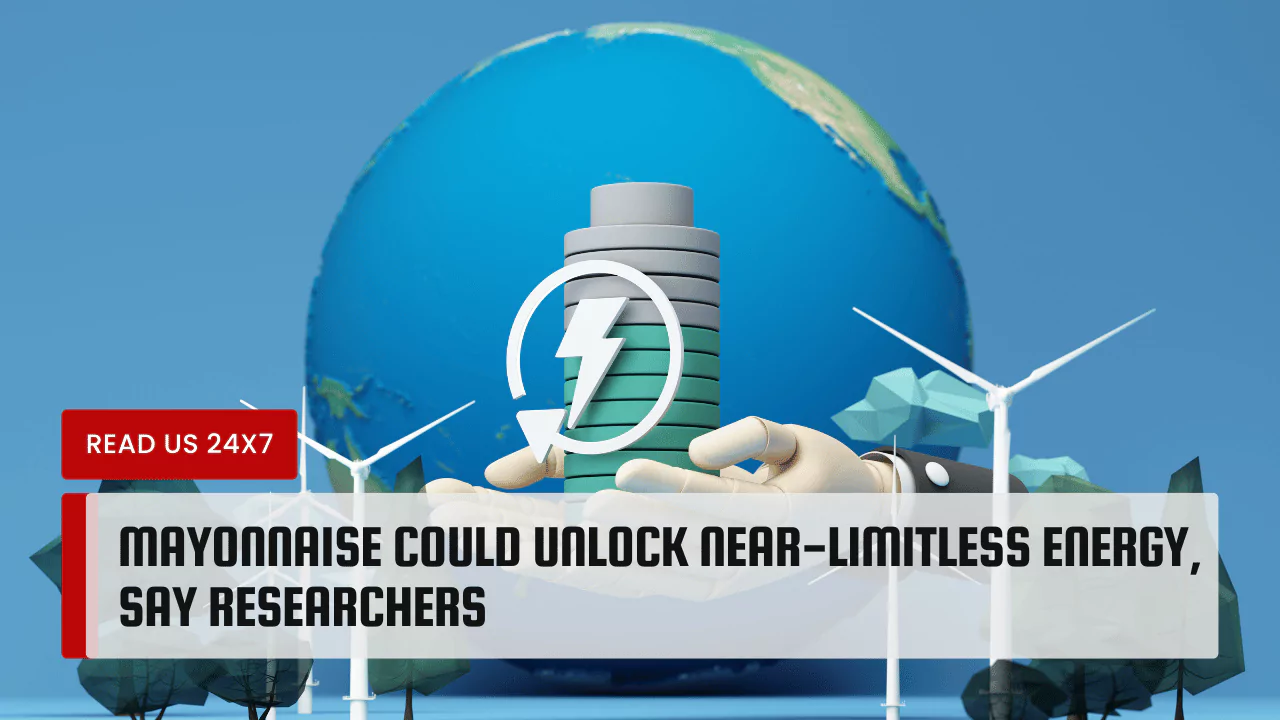Researchers suggest that mayonnaise might help unlock near-limitless clean energy through nuclear fusion. This surprising finding comes from a study exploring how mayonnaise behaves under pressure, offering insights that could improve fusion technology. The work leads scientists closer to achieving the energy levels needed for successful nuclear fusion.
The Role of Mayonnaise in Nuclear Fusion Research
A team at Lehigh University conducted research comparing mayonnaise to plasma in nuclear fusion reactors. Plasma is a hot, electrically charged gas present during nuclear fusion. Mayonnaise, a thick mixture of eggs and oil, has unique properties that mimic the behavior of molten metals in fusion processes.
When subjected to a force or pressure, mayonnaise can display two stages. The first stage is elastic. When pressure is removed, the mayonnaise returns to its original shape. The second stage is plastic. The mayonnaise deforms and does not return to its original state. This discovery suggests that understanding mayonnaise’s flow properties can shed light on the conditions under which man-made nuclear fusion achieves stability.
Scientists believe that studying this condiment may help clarify the transition between different states of matter. This work allows researchers to visualize the dynamics of fusion materials without needing the extremely high temperatures found in stars.
Breakthroughs in Fusion Efficiency
Nuclear fusion has the potential to provide abundant and clean energy. However, achieving stable fusion on Earth remains a challenge. It requires temperatures to reach millions of degrees. In this study, researchers analyzed the conditions under which mayonnaise moves between its elastic and plastic states, hoping to apply this understanding to fusion reactions.
One significant aspect of the research was finding the balance needed to delay instability in the fusion process. The challenge with fusion is that as conditions change, the materials can explode or become unstable. The study showed potential ways to improve energy yield during fusion reactions. These findings could lead to smoother transitions and better control of the fusion process, potentially increasing efficiency.
When researchers identified the conditions that allow for elastic recovery in mayonnaise, they found valuable data on how to maximize this property. This knowledge might help in developing fusion reactors that can stabilize energy production, thus contributing to greater efficiency in producing power.
Future Implications
The implications of this research are broad. If scientists can harness nuclear fusion effectively, the potential for energy production is immense. Nuclear fusion relies on fusing hydrogen into helium, a process that occurs naturally in stars. Once achieved on Earth, fusion could provide a nearly limitless supply of energy, offering a cleaner alternative to fossil fuels.
The environmental benefits are substantial as well. Nuclear fusion generates very little waste compared to fission, the process used in current nuclear reactors. This means fewer harmful byproducts and a reduced risk of nuclear disasters. When honed effectively, fusion could significantly reduce air pollution and greenhouse gas emissions.
While mayonnaise might seem an unlikely catalyst for such advances, its unique properties highlight the blend of creativity and science. Researchers aim to translate lessons learned from mayonnaise to real-world challenges in fusion reactors.
In the years to come, adjustments made in fusion technology could lead to improved reactors capable of producing energy more sustainably. Though the road to achieving these goals remains long and complicated, the intersection of food science and energy research offers a glimpse of unexpected innovations.
In conclusion, the study of mayonnaise in the context of nuclear fusion is groundbreaking. It shows that mundane household items can inspire transformative scientific breakthroughs. By understanding how mayonnaise flows, researchers hope to create a more efficient method for harnessing nuclear fusion energy, moving closer to reducing humanity’s reliance on fossil fuels. The future of energy production could benefit from this unique and creative approach, paving the way for a cleaner, brighter tomorrow.



